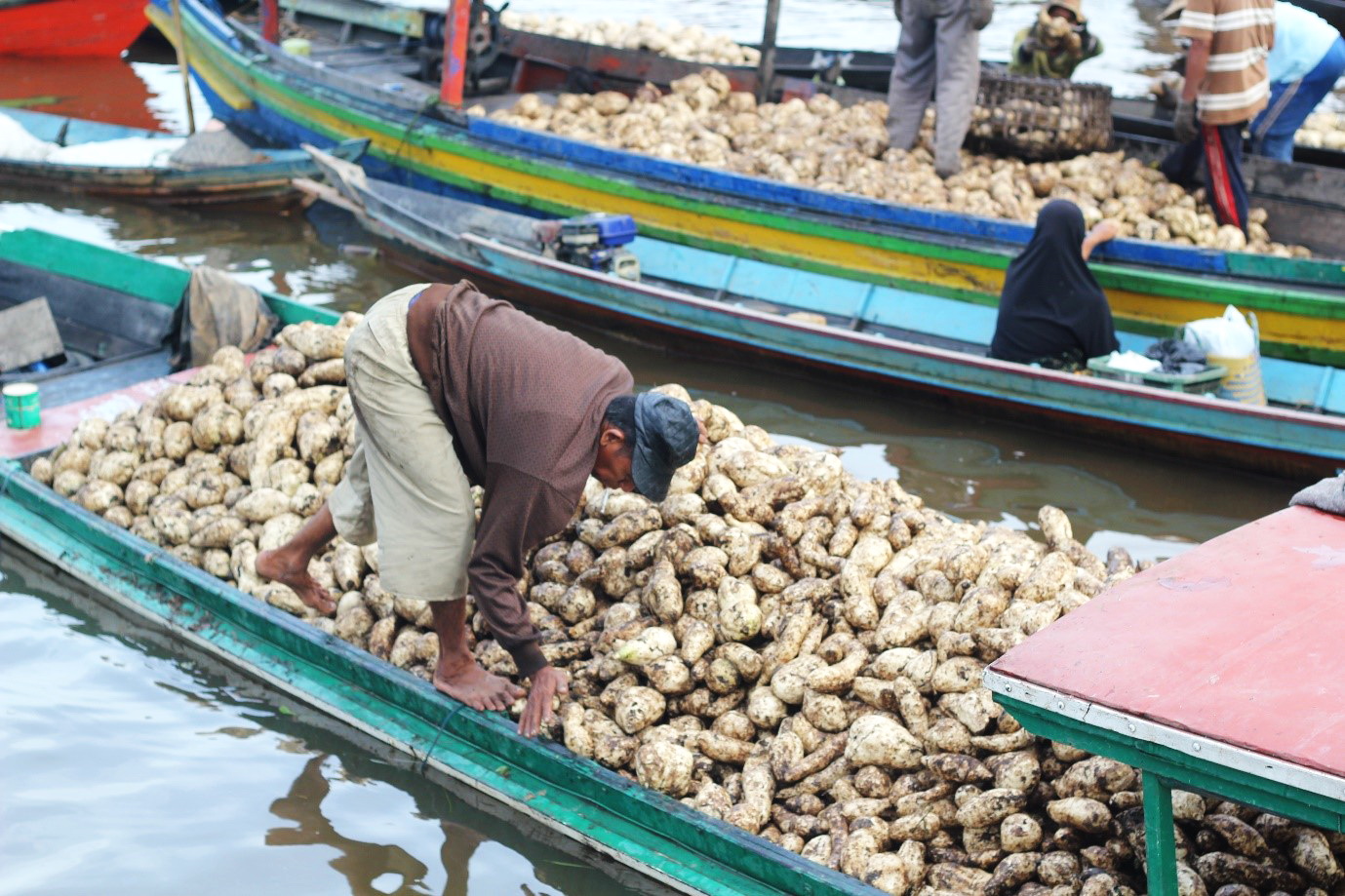Dry Season Alert for Riau in 2021
By ZamzamiThe Lives of “Water People” in South Kalimantan
Communities in peatland areas are known as “water people”, because their daily lives are generally inseparable from the water. They often live in riverbank settlements and make a living as swamp rice farmers, fishermen, and duck and water buffalo breeders.
One such community in South Kalimantan is Baruh Jaya Village. The word “baruh” in the village’s name means river, rice field, or lake. This area used to be known as Tambangan Village, but in the 1970s, as the local population expanded, Baruh Jaya Village became more familiar. As in other riverbank communities, houses are made from wood and lifted off the ground with long stilts. There are 2,247 households living in this area, who must travel considerable distances to reach their farms.
Baruh Jaya villagers skillfully utilize local natural resources for productive activities.
The river provides a vital transportation route, irrigates land for farming, and feeds the surrounding swamps filled with cork fish, climbing perches, and three-spot gouramis. Villagers also optimize production from available agricultural land by planting a variety of food sources, such as sweet potato, cowpea, watermelon, and rice, which are harvested on a revolving basis.
Male and female community members manage the existing natural resources hand in hand. During planting season and harvest, men and women go to the plantation area together. Half of the women cook in the plantation area to provide food for their families, and the other half stays home to take care of the children. As soon as the children become independent, these women join the work at the plantation as well.
Locals also utilize the area’s swamps and peatland to cultivate plants and breed farm animals. Since long before commercial agriculture became common practice, Baruh Jaya villagers have been using natural resources for small-scale, sustainable activities passed from generation to generation.
Baruh Jaya villagers’ main livelihoods are farming and fishing. During the rainy season, they farm. When the dry season comes, they fish. In addition, they trade, create household tools, and make handicrafts from metal, gold, and other materials. The villagers also run a motorized boat transportation service.
Baruh Jaya Village is located in the Nagara district, which is known for producing watermelons (called “nagara watermelons”) and sweet potatoes (called “nagara gumbili”). The Nagara watermelon harvest is so large that it meets the quota for three provinces: South Kalimantan, East Kalimantan, and Central Kalimantan.
“Our grandparents have grown watermelons and sweet potatoes since long ago. Many people from Nagara have been able to make the pilgrimage [to Mecca] just from the yields of watermelons and sweet potatoes,” said Hamid, a Nagara farmer.
The residents of Nagara farm and cultivate the land by following nature’s cues. Although it is hard to predict when seasons will change, this is not a major obstacle, because their local knowledge guides them.
The Baruh Jaya villagers’ farmland is about an hour’s travel from the settlement, passing over a big river and a small river. There is only one way to reach it, which involves boarding a small boat (ces) with a maximum capacity of three people. Because each plot of farmland is separated by a canal (ray) that can only be crossed by small boats, this is the only viable travel option between farmland plots as well.
Such are the lives of Baruh Jaya villagers, who have become a part of the regional peat ecosystem through their ability to adapt to their natural surroundings. This is a valuable example of a community adapting to life in peatlands, which peat management efforts and peat-related government policies should take into account.













